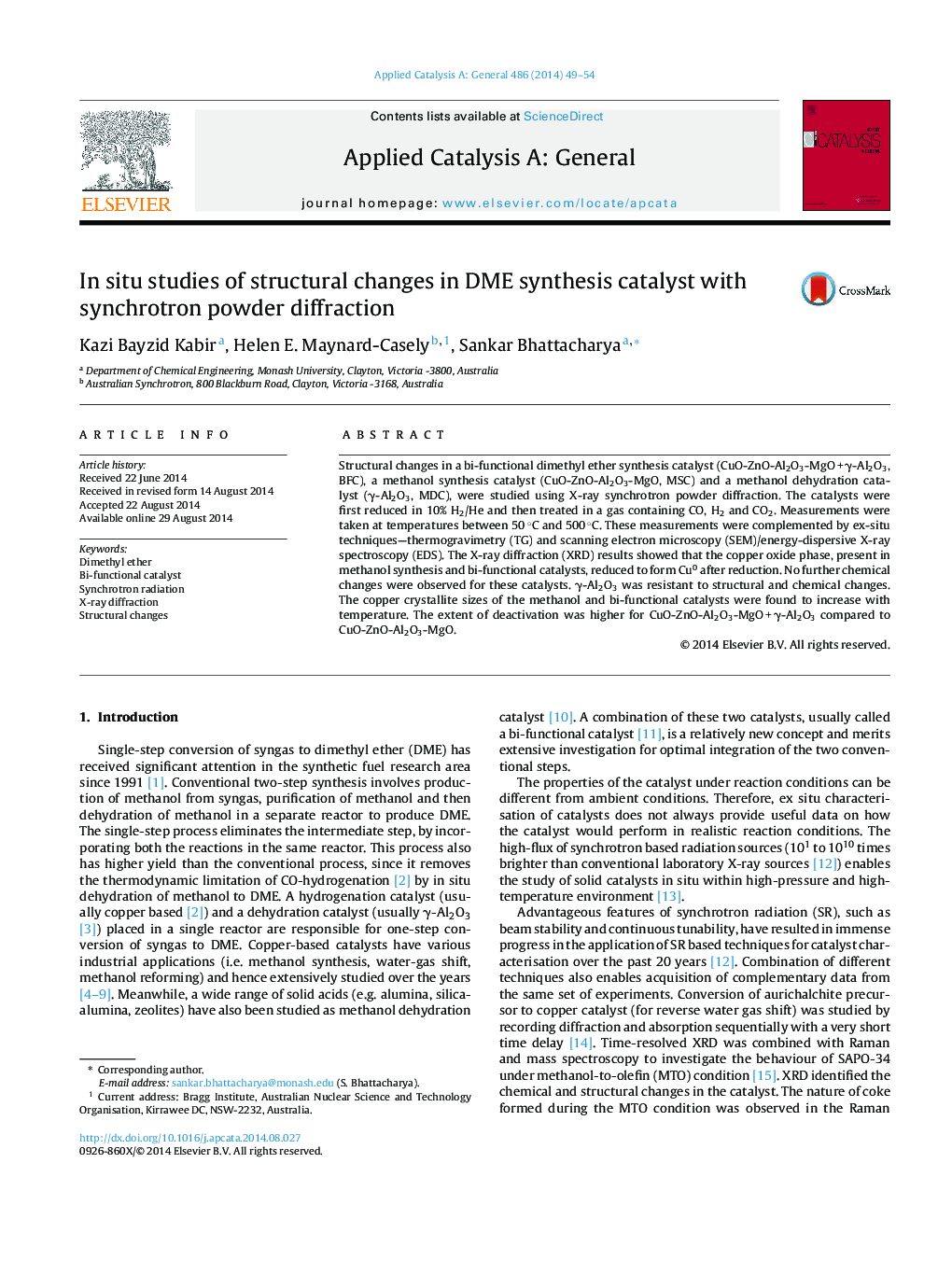| Article ID | Journal | Published Year | Pages | File Type |
|---|---|---|---|---|
| 39430 | Applied Catalysis A: General | 2014 | 6 Pages |
•Faster deactivation for DME than methanol catalyst; linked to water formation.•Crystalline copper phase grew at the expense of microstructural features.•Dehydration catalyst was thermally and structurally stable.•Thermal sintering at high T caused migration of the support.
Structural changes in a bi-functional dimethyl ether synthesis catalyst (CuO-ZnO-Al2O3-MgO + γ-Al2O3, BFC), a methanol synthesis catalyst (CuO-ZnO-Al2O3-MgO, MSC) and a methanol dehydration catalyst (γ-Al2O3, MDC), were studied using X-ray synchrotron powder diffraction. The catalysts were first reduced in 10% H2/He and then treated in a gas containing CO, H2 and CO2. Measurements were taken at temperatures between 50 °C and 500 °C. These measurements were complemented by ex-situ techniques—thermogravimetry (TG) and scanning electron microscopy (SEM)/energy-dispersive X-ray spectroscopy (EDS). The X-ray diffraction (XRD) results showed that the copper oxide phase, present in methanol synthesis and bi-functional catalysts, reduced to form Cu0 after reduction. No further chemical changes were observed for these catalysts. γ-Al2O3 was resistant to structural and chemical changes. The copper crystallite sizes of the methanol and bi-functional catalysts were found to increase with temperature. The extent of deactivation was higher for CuO-ZnO-Al2O3-MgO + γ-Al2O3 compared to CuO-ZnO-Al2O3-MgO.
Graphical abstractFigure optionsDownload full-size imageDownload high-quality image (180 K)Download as PowerPoint slide
